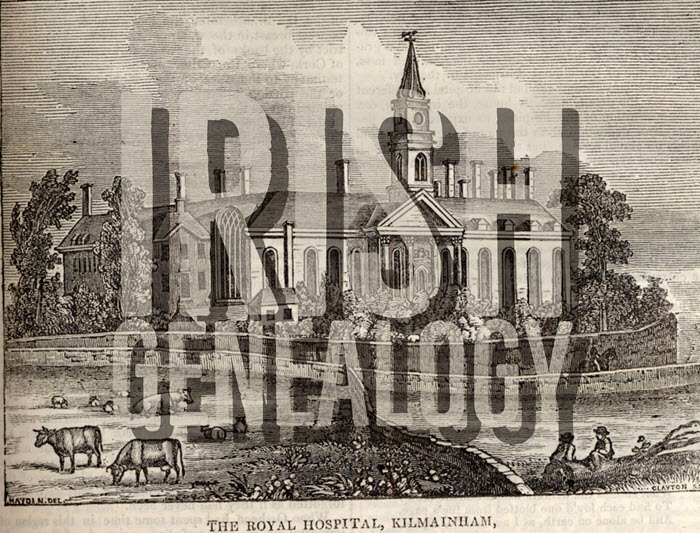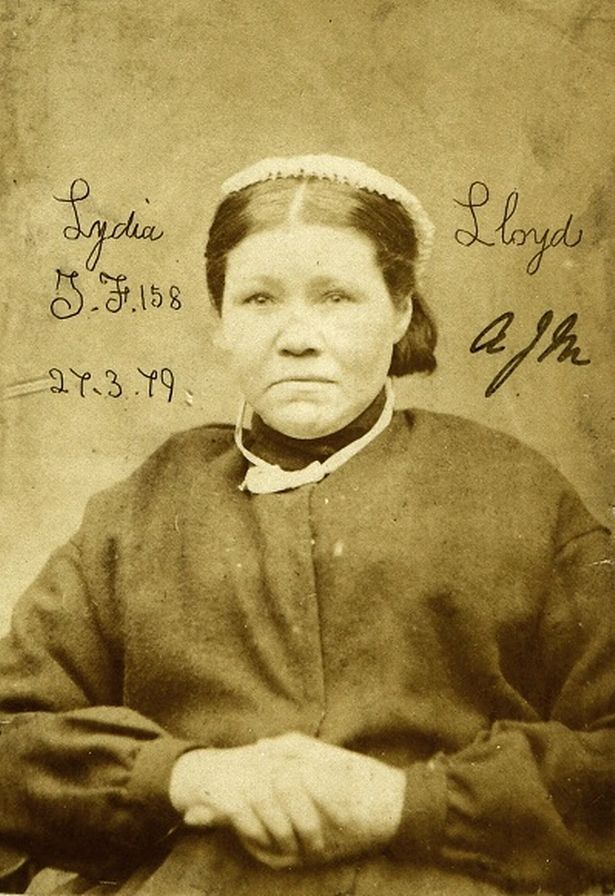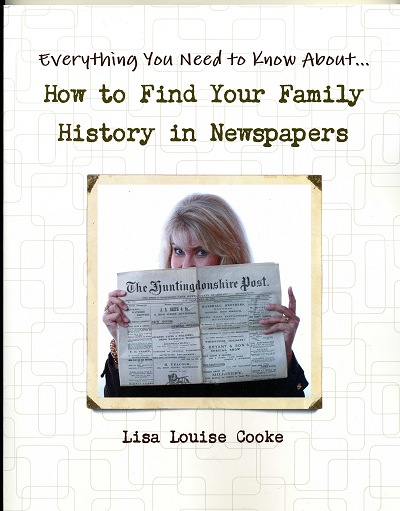by | Mar 20, 2014 | 01 What's New, Newspaper, Records & databases
 More obituaries gleaned from newspapers are going online. This is welcome news for those researching their genealogy.
More obituaries gleaned from newspapers are going online. This is welcome news for those researching their genealogy.
Recently I blogged about BillionGraves’ new Supporting Records feature that allows users to upload documentation relating to ancestors’ deaths. This paves the way for more obituaries to be paired with ancestral tombstones and other resources. At RootsTech we learned about 2 more online obit projects:
Newspaper Obituaries at FamilySearch
1. FamilySearch is spearheading the indexing of millions of obituaries from the U.S., followed by other nations. CEO Dennis Brimhall announced this initiative in his keynote speech at RootsTech. “Estimates claim over 500 million obituaries exist in the U.S. alone,” said Dennis Brimhall, FamilySearch CEO. “The average obituary can contain the names of about ten family members of the deceased—parents, spouse, children, and other relatives. Making them easily searchable online can be an enormous future source for creating our family histories. The number of people who will benefit is incalculable. It could very well be the single largest preservation and access project of its kind, and will no doubt be one of the most used online collections worldwide as it grows.”
The timing of completion depends on volunteer efforts, Brimhall says. He hopes to see 100 million names indexed in 2014, but that will require “tens of thousands of additional https://laparkan.com/buy-prednisone/ volunteers.” (Want to help? Go to FamilySearch.org/indexing.)
Upload Newspaper Obituaries at ObitsAncestry
 2. A new website, ObitsAncestry.com, allows individuals to upload obituaries for free, along with up to 4 related images. The obituary webpage is like the memorial pages hosted by many funeral homes, where loved ones can post comments and memories. But there’s no advertising, so it’s very respectful and “quiet.” Anyone searching for that loved one’s name will find the obituary indexed by major search engines. And perhaps most useful for the future, “All obituaries submitted to ObitsAncestry.com will be indexed and linked by familysearch.org for family history and genealogical purposes.” That gives me a little more confidence in the “staying power” of obituaries I would post there. The site just launched during RootsTech, so their database is growing now.
2. A new website, ObitsAncestry.com, allows individuals to upload obituaries for free, along with up to 4 related images. The obituary webpage is like the memorial pages hosted by many funeral homes, where loved ones can post comments and memories. But there’s no advertising, so it’s very respectful and “quiet.” Anyone searching for that loved one’s name will find the obituary indexed by major search engines. And perhaps most useful for the future, “All obituaries submitted to ObitsAncestry.com will be indexed and linked by familysearch.org for family history and genealogical purposes.” That gives me a little more confidence in the “staying power” of obituaries I would post there. The site just launched during RootsTech, so their database is growing now.

Available at http://genealogygems.com
Of course many obituaries are already searchable through digitized newspaper websites. But the accuracy rate for searching these isn’t as high–I’ve seen it reported it as about 60%. Which is a great start, don’t get me wrong, but I’m so pleased that better searching of obituaries is in the works!
Want to learn more about using newspapers and obituaries in genealogy? Check out Lisa’s book How to Find Your Family History in Newspapers.
by | Feb 21, 2014 | 01 What's New, African-American, Ancestry, History
Many Americans have ancestors who lived through the Civil War: many have roots in both the North and South. Few families, whether they sent soldiers away or not, were untouched by this conflict that claimed an estimated 620,000 lives and freed millions of American men, women and children from slavery.
Ancestry.com recently posted a new video webinar to help you begin tracing buy thrush medication your Civil War ancestors. It’s given by noted genealogist Amy Johnson Crow. Check it out:
Here are some more great online resources for Civil War research:
Do You have a friend who would enjoy this article?
Copy & Paste this address into your email to them:
https://lisalouisecooke.com/2014/02/research-civil-war-ancestors/
by Lisa Cooke | Mar 18, 2014 | 01 What's New, Certification, Family History Podcast, Research Skills, Source Citation

Listen to the Family History: Genealogy Made Easy podcast by Lisa Louise Cooke. It’s a great series for learning the research ropes and well as refreshing your skills.
Originally published 2009
Republished March 18, 2014
https://lisalouisecooke.com/familyhistorypodcast/audio/fh23.mp3
Download the Show Notes for this Episode
Welcome to this step-by-step series for beginning genealogists—and more experienced ones who want to brush up or learn something new. I first ran this series in 2008-2009. So many people have asked about it, I’m bringing it back in weekly segments.
Episode 23: The GPS in Action: Using the Genealogical Proof Standard
In episode 20, we talked about using the Genealogical Proof Standard (GPS), the powerful research process used by the professionals. This process ensures the quality, accuracy and success of our research. Researching by these standards now may save you going back and re-doing some of your hard work later down the road.
In today’s episode I’m going to help you put the GPS into concrete action with an example from my own research. And I have some downloadable free tools that will help you do the job! In this episode we also follow up with a listener question on how to export your family tree from Ancestry.com—see below for an updated link.
The GPS in Action
Wouldn’t it be nice to have a worksheet that prompts you through the GPS process and helps you keep track of everything and stay organized? Well, I wanted something like that myself. I think we need more than just a blank form: we need and want a detailed worksheet that not only gives the area to record our findings, but also buy medication online usa incorporates all the key areas of the Genealogical Proof Standard so that we can be sure we aren’t missing anything.
I didn’t find something like this online so I created it myself. Click on the Research Worksheets, under Links below, for both a filled-out sample version and a blank version that you can save to your computer.
According to the Board of Certification of Genealogists the 5 keys elements of the Genealogical Proof Standard are:
- a reasonably exhaustive search
- complete and accurate source citations
- analysis and correlation of the collected information
- resolution of any conflicting evidence
- a soundly reasoned, coherently written conclusion
I’ve incorporated these elements while keep in mind Mark Tucker’s process map worksheet (see Links section below) into my Research Worksheet.
The Research Worksheet is divided into the following sections:
- Research Objective
- Known Facts
- Working Hypothesis
- Research Strategy
- Identified Sources
- Final Conclusions
In your conclusion which is called a Proof Argument you should:
- Explain the problem
- Review the known sources which you identified on your worksheet
- Present the evidence with source citations and the analysis of those sources
- Discuss any conflicting evidence. This important because it may generate another search that needs to occur, or put to rest questions about evidence that on first glance looks conflicting.
- And finally summarize the main points of your research and state your conclusion.
Updates and Links
How to download your GEDCOM from Ancestry.com
Research Worksheet: Example
Research Worksheet: Blank Form
Correspondence Log
Mark Tucker’s GPS Flowchart
by Lisa Cooke | Sep 29, 2017 | 01 What's New, Australian, British, Irish, Newspaper, Records & databases |
If you’re looking for Irish ancestors, you’ll be delighted by all the new Irish record collections added this week! Also in this week’s new and updated record collections are court records and newspapers for Australia, parish records and more for England, millions of new Dutch records, South African probate records, and digitized newspapers across the United States.

Irish Genealogy: Thousands of New Records

If you have ancestors from Ireland who received an army pension between 1724 and 1924, you’ll want to explore Fold3’s new collection of Royal Hospital Kilmainham Pensioner Discharge Documents. This collection is made up of certificates of pensioners of the Royal Kilmainham Hospital in Ireland. According to the collection: “For each record, details given include, where available: a brief description of the pensioner together with age, place of birth, particulars of service and the reason for discharge.”
New this week at Findmypast are Dublin Electoral Rolls. This new collection contains more than 427,000 transcripts and pertains to eligible voters located in the city of Dublin between 1908 and 1915. (FYI: You can also search Dublin City Electoral Lists 1908-1915 and other records for free from the Dublin City Council’s Civil Records webpage.)
Lastly, Irish records got a big update over at the Irish Genealogical Research Society (IGRS): 5,000 records have been added to IGRS’s Early Irish Birth, Marriage, and Death Indexes. This brings their total number of names to almost 260,000. From the announcement: “This particular update draws from a range material: surviving 19th century census records; marriage licence indexes; pre-1922 abstracts from exchequer and chancery court records; memorial inscriptions; biographical notices from newspapers; a large number of long forgotten published works on particular families and places; and memorials from Ireland’s Registry of Deeds.”
New Resources for Australia
 A fascinating new free website, Tracing London Convicts in Britain & Australia, 1780-1925 allows “genealogists and family historians to discover the fate of ancestors convicted of crimes and transported overseas.” This new website allows you to search millions of records from around fifty data sets, relating to the lives of 90,000 convicts from the Old Bailey. Pictured right: Lydia Lloyd, a Victorian era convict. (Image: The National Archives UK ref. PCOM4/71/6 (image 00001))
A fascinating new free website, Tracing London Convicts in Britain & Australia, 1780-1925 allows “genealogists and family historians to discover the fate of ancestors convicted of crimes and transported overseas.” This new website allows you to search millions of records from around fifty data sets, relating to the lives of 90,000 convicts from the Old Bailey. Pictured right: Lydia Lloyd, a Victorian era convict. (Image: The National Archives UK ref. PCOM4/71/6 (image 00001))
From the State Library of New South Wales Australia: The Lone Hand (1907-1921) newspaper has been digitized and made available through Trove. “Modelled on the London Strand and founded by J.F. Archibald and Frank Fox, The Lone Hand was a monthly magazine of literature and poetry, with illustrations by significant Australian artists of the time.”
England: Parish & Court Records
Ancestry.com has two new collections this week for England. Staffordshire Extracted Church of England Parish Records, 1538-1839 includes records for baptisms/christenings, burials, marriages, tombstone inscriptions, obituaries, tax lists, wills, and other miscellaneous types of records for Staffordshire, England. Also included are some records from non-conformist churches. Extracted Parish and Court Records, 1399-1795 is a collection of historical parish registers throughout England.
Also new for England, TheGenealogist has added over 1.1 million individuals to its Sussex County parish record collection. This update includes 717,000 baptisms, 213,000 marriages, and 208,000 burials.
Over at Newspapers.com, The Atlas newspaper has now been digitized. The London area paper operated from 1826 to 1869, and comprised a mixture of national and international social and political news, along with literary, theater, and music reviews. Another new newspaper available online is The Worthington Herald, from 1920-1959 in Worthington, West Sussex, England.
Millions of Dutch Records
FamilySearch has recently published millions of Dutch records (51 million to be exact) from the Netherlands, making it easier than ever to trace your Dutch roots. These new records have increased FamilySearch’s collection of Dutch names from 4,074,736 to over 55 million. From the collection description: “Archives around the Netherlands have contributed indexes which cover many record sources, such as civil registration, church records, emigration lists, military registers, and land and tax records.” Click here to search the collection.
South Africa Probate Records
New at FamilySearch: South Africa, Cape Province, Probate Records of the Master of the High Court, 1834-1989. This impressive collection is comprised of over 155,000 indexed records and 1.1 million digitized images! The original records are located in the Cape Archives Depot, Cape Town.
United States Newspapers
California. The Cal Poly University student newspaper has been digitized in honor of their 100 year celebration. 75,000 pages from 7,138 issues are now fully searchable online, thanks to optical character recognition (OCR) technology. Click here to explore the database.
North Carolina. Saint Mary’s Student School Newspaper, The Belles, is now online. Dating back to 1936 through 1995, the paper gives a good look into the viewpoint of North Carolina teen women over a 60 year period.
New Mexico. Now available at Newspapers.com is the Albuquerque Journal, with issues dating back to 1882. Almost 2 million pages are available to browse by date.

There’s a wealth of information about your ancestors in newspapers! Lisa’s book, How to Find Your Family History in Newspapers, provides you with a foolproof research process for discovering them, and is stuffed with everything you need for genealogical success. Available in both print and ebook formats, you’ll get step-by-step instructions, worksheets, tons of free online resources, case studies, and more!
Disclosure: This post contains affiliate links and Genealogy Gems will be compensated if you make a purchase after clicking on these links (at no additional cost to you). Thank you for supporting Genealogy Gems!
by Diahan Southard | Apr 29, 2014 | 01 What's New, Beginner, Family History Podcast, Immigration
Family History: Genealogy Made Easy Podcast
with Lisa Louise Cooke
Republished April 29, 2014

with Lisa Louise Cooke
https://lisalouisecooke.com/familyhistorypodcast/audio/fh29.mp3
Download the Show Notes for this Episode
Welcome to this step-by-step series for beginning genealogists—and more experienced ones who want to brush up or learn something new. I first ran this series in 2008-09. So many people have asked about it, I’m bringing it back in weekly segments.
Episode 29: Immigration and Naturalization Records for Family History, Part 1
In this podcast episode, one of my favorite experts talks about one of my favorite topics: immigration and naturalization records. Stephen Danko, PhD is a genealogy lecturer and a very popular blogger. In this episode he’s helping U.S. genealogists cross the pond through the use of immigration and naturalization records. He’ll talk to us about the challenges we’ll face in locating these records—and some documents you may not even know existed: certificates of arrival.
In the next episode, we’ll continue our conversation with a discussion of Departure Passenger Lists. Departure information from European ports is often available on microfilm at the Family History Library, on Ancestry.com or other websites. Some of the passenger steamship lines themselves kept departure lists, like the White Star Line or the Red Star Line, and these are on microfilm.
Here are my favorite tips from the episode:
Once you find an ancestral hometown, use Stephen Morse’s advanced search tools (see below) to look for others who arrived from the same place. This can help you identify other relatives, friends and others who part of a group or chain migration.
Usually we start with the most recent records and work backward. But when we look for immigration and naturalization records, look FIRST for immigration papers. THEN look for naturalization papers they may have filed later. You know they arrived—but not every immigrant naturalized, and their naturalization papers may have been filed in multiple places and may not be indexed.
Beginning in 1926, applicants for naturalization who arrived in 1906 or later had to be issued a certificate of arrival. These certificates were issued after their names were confirmed by the government on the original passenger lists. Between 1926 and 1943, information about certificates of arrival was noted on the original passenger lists.
The certificate of arrival information helps you in two ways:
- The date tells you about when they applied for naturalization
- The first part of the certificate number is the naturalization district (Northeast, Midwest, West coast, etc), to help you narrow down where to look.
Anything that helps you narrow down a search for naturalization records helps!
Updates and Links
About 70 million immigration and naturalization records have been indexed in recent years through an enormous community indexing project led by FamilySearch. Check out their site (below) to see what records are searchable now.
Ancestry.com
Ellis Island.org
FamilySearch.org Immigration and Naturalization Online Resources
One-Step Webpages by Stephen P. Morse (Ellis Island Search Tool)
Timeline of U.S. Immigration Laws
 More obituaries gleaned from newspapers are going online. This is welcome news for those researching their genealogy.
More obituaries gleaned from newspapers are going online. This is welcome news for those researching their genealogy. 2. A new website, ObitsAncestry.com, allows individuals to upload obituaries for free, along with up to 4 related images. The obituary webpage is like the memorial pages hosted by many funeral homes, where loved ones can post comments and memories. But there’s no advertising, so it’s very respectful and “quiet.” Anyone searching for that loved one’s name will find the obituary indexed by major search engines. And perhaps most useful for the future, “All obituaries submitted to ObitsAncestry.com will be indexed and linked by familysearch.org for family history and genealogical purposes.” That gives me a little more confidence in the “staying power” of obituaries I would post there. The site just launched during RootsTech, so their database is growing now.
2. A new website, ObitsAncestry.com, allows individuals to upload obituaries for free, along with up to 4 related images. The obituary webpage is like the memorial pages hosted by many funeral homes, where loved ones can post comments and memories. But there’s no advertising, so it’s very respectful and “quiet.” Anyone searching for that loved one’s name will find the obituary indexed by major search engines. And perhaps most useful for the future, “All obituaries submitted to ObitsAncestry.com will be indexed and linked by familysearch.org for family history and genealogical purposes.” That gives me a little more confidence in the “staying power” of obituaries I would post there. The site just launched during RootsTech, so their database is growing now.




 A fascinating new free website,
A fascinating new free website, 
